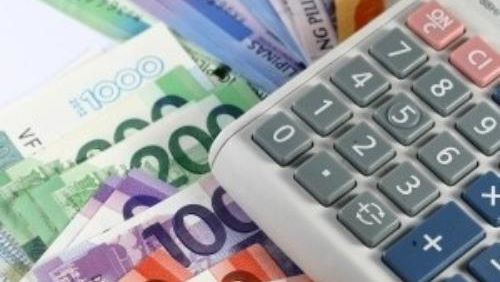
With more loans to finance COVID-19 response that flowed during the first full month of lockdown, the national government’s gross borrowings in April surged by 593 percent year-on-year to P262.7 billion.
The latest Bureau of the Treasury data showed that combined gross domestic and external borrowings in the same month last year amounted to only P37.9 billion.
Gross financing from foreign sources amounted to P90.6 billion, which included P579 million in project loans and P90.1 billion in program loans.
Treasury data showed that the program loans last April were the biggest monthly amount in history and was larger than the P78.2 billion for the entire 2019.
National Treasurer Rosalia V. de Leon said the program loans in April included the Asian Development Bank’s P50.8-billion COVID-19 active response and expenditure support program and P3.9-billion emergency assistance for reconstruction and development of Greater Marawi as well as the World Bank’s P25.2-billion loan also for COVID-19 response and P10.1-billion social welfare development and reform project.
Borrowings in April
Treasury data nonetheless showed that gross domestic borrowings in April reached P172.1 billion, surpassing those borrowed from foreign sources.
Last April, the Treasury issued a net of P88.03 billion in bills on top of P84.07 billion in fixed-rate bonds.
At the end of the first four months, total gross borrowings reached P919.4 billion—P682.1-billion domestic and P237.3-billion external, which were already close to the P1.02 trillion borrowed by the national government for the entire of last year.
Debt metric
As the government had to raise more money to address the health and socioeconomic crises caused by the pandemic, it will have to rely more on borrowings as tax and non-tax revenues were also expected to be weak amid a recession.
Last month, the Cabinet-level Development Budget Coordination Committee projected the debt-to-gross domestic product (GDP) ratio to hit 51.5 percent in 2021 and 52.3 percent in 2022, a further increase from 49.8 percent this year, equivalent to a record P9.6 trillion in debt.
As of end-April, the national government’s debt stock stood at a new high of P8.6 trillion.
Treasury data showed that the last time the Philippines had a debt-to-GDP ratio above 50 percent was in 2010, at 50.2 percent.
The debt metric reflecting a country’s ability to pay its obligations had gone down the past few years and fell to a low of 39.6 percent last year.
While the Philippines was recently ramping up foreign borrowings through offshore bond issuances as well as loans from multilateral lenders and bilateral partners, Finance Secretary Carlos G. Dominguez III last week reiterated that the bulk or 70 to 75 percent of yearly total financing would come from domestic sources. INQ